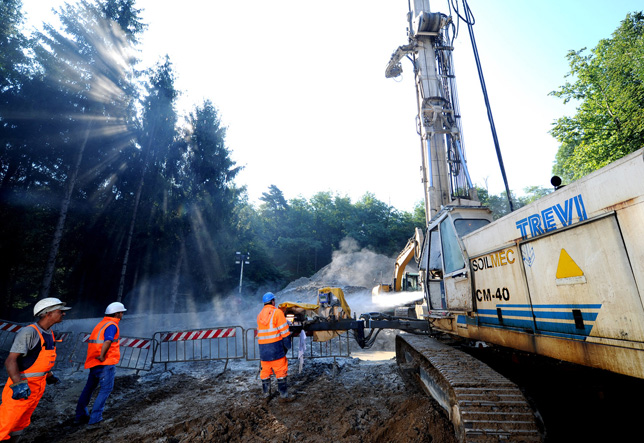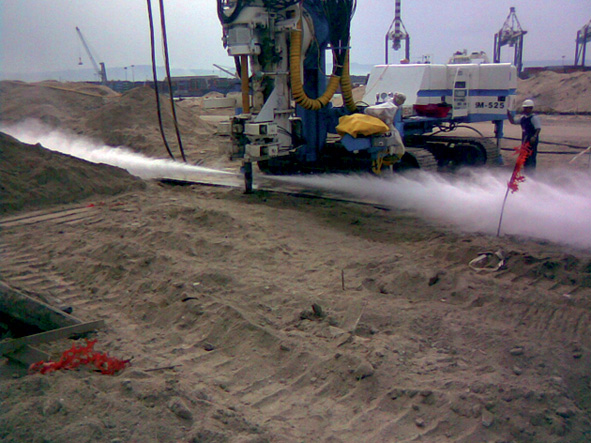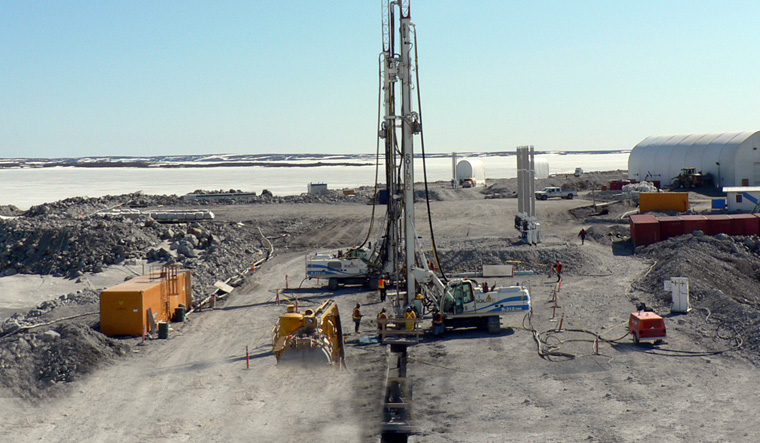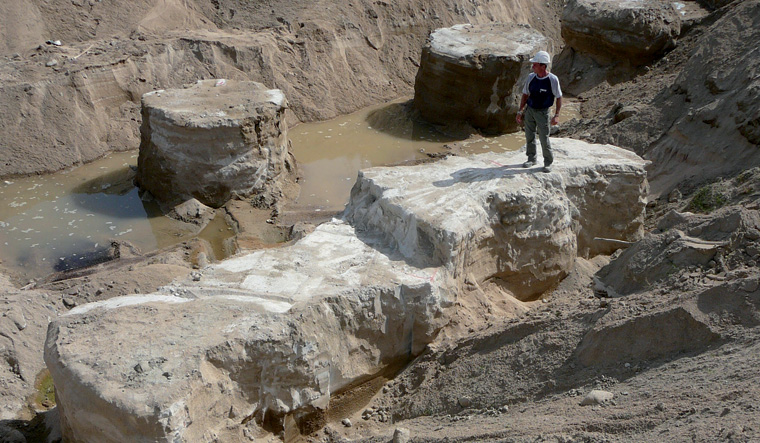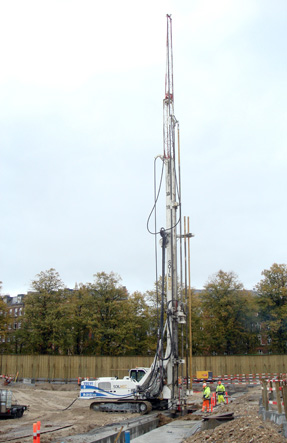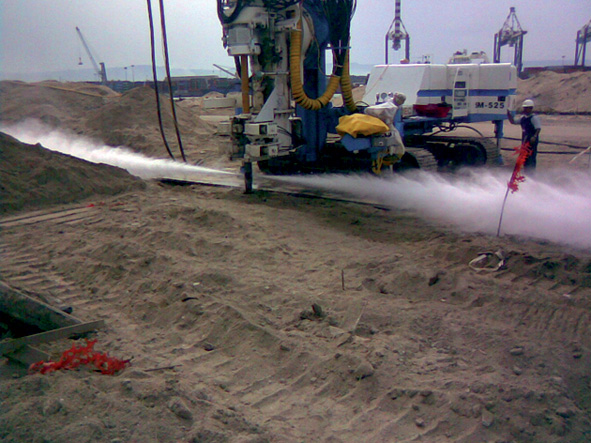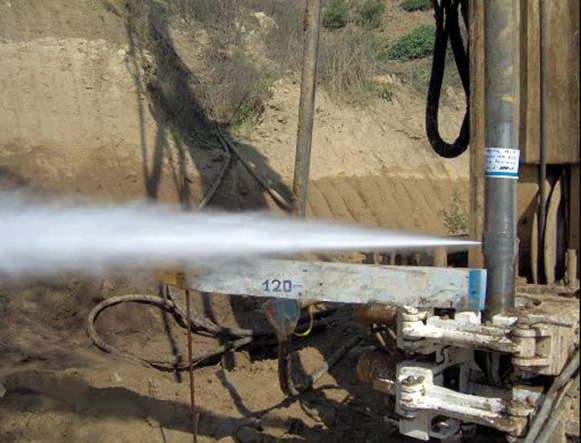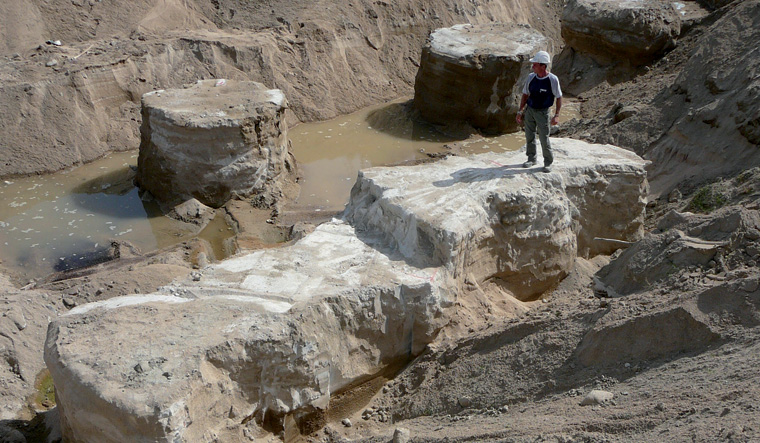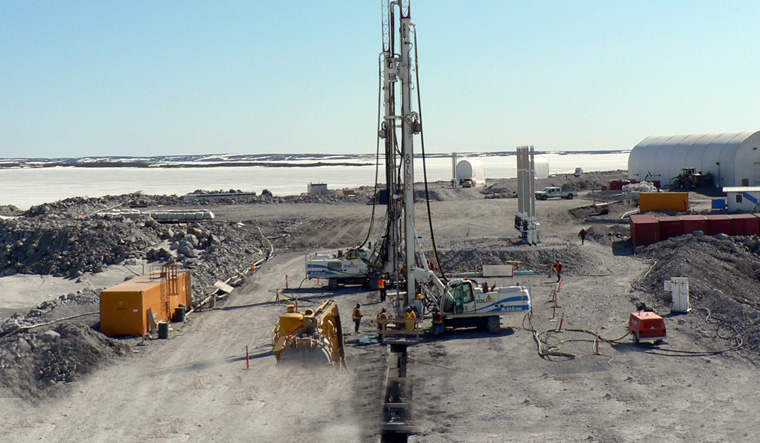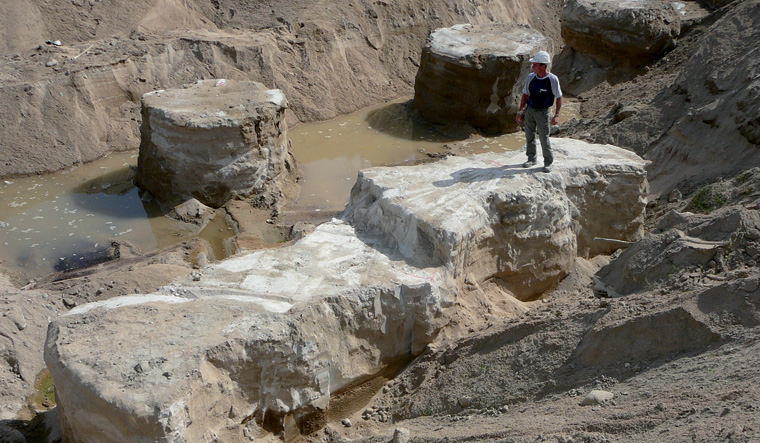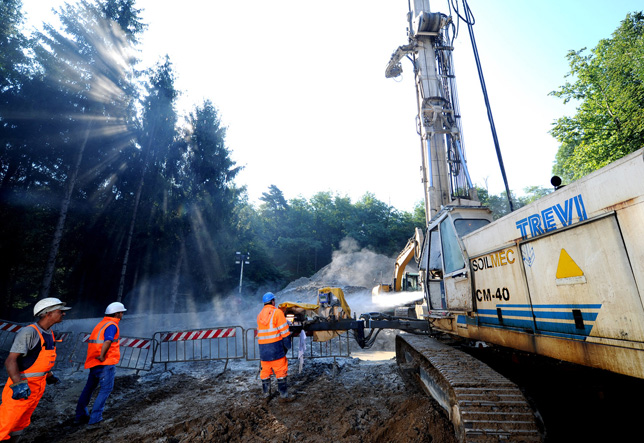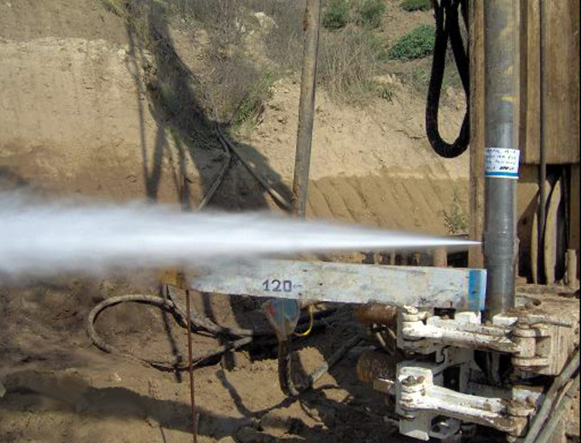Jet Grouting
The Jet-Grouting techniques have been developed for soil consolidation and waterproofing.
Soil is directly mixed with cement in site to treat sand and clay formations in a homogeneous, continuous and non-polluting way.
Advantages
- capability to obtain columns of consolidated soil with diameter ranging from 60 to more than 300 cm by using small diameter drilled holes, in general not larger than 180÷200 mm.
- capability to overpass pre-existing foundations, boulders, rocky layers.
- use of light weight and small-sized drill rigs in small working areas.
Applications
- underpinning
- diaphragm walls
- tunnel consolidations
- bottom plugs
- slopes consolidations
- dam cut-offs
- diaphragm wall gaps
- break-in and break-out for TBM
Techniques
The Jet-grouting techniques are classified depending on the number of fluids injected during treatment:
- Mono-fluid system: cement grout is used as breaking-up and consolidation agent (TREVIJET T1)
- Bi-fluid system: cement grout and air are used as breaking-up and consolidation agent (TREVIJET T1/S)
- Triple-fluid system: water and air are used as breaking-up agents, while the cement grout is used as consolidation agent (TREVIJET T2)
All Jet-Grouting techniques include a drilling phase followed by withdrawal and rotation at preset values, with simultaneous injection of fluids at high pressure.
Download
Contact Us
Headquarters:
Via Dismano, 5819
47522 Cesena (Forlì Cesena) Italy
Phone:
Phone +39 0547 319111
Fax +39 0547 318548
